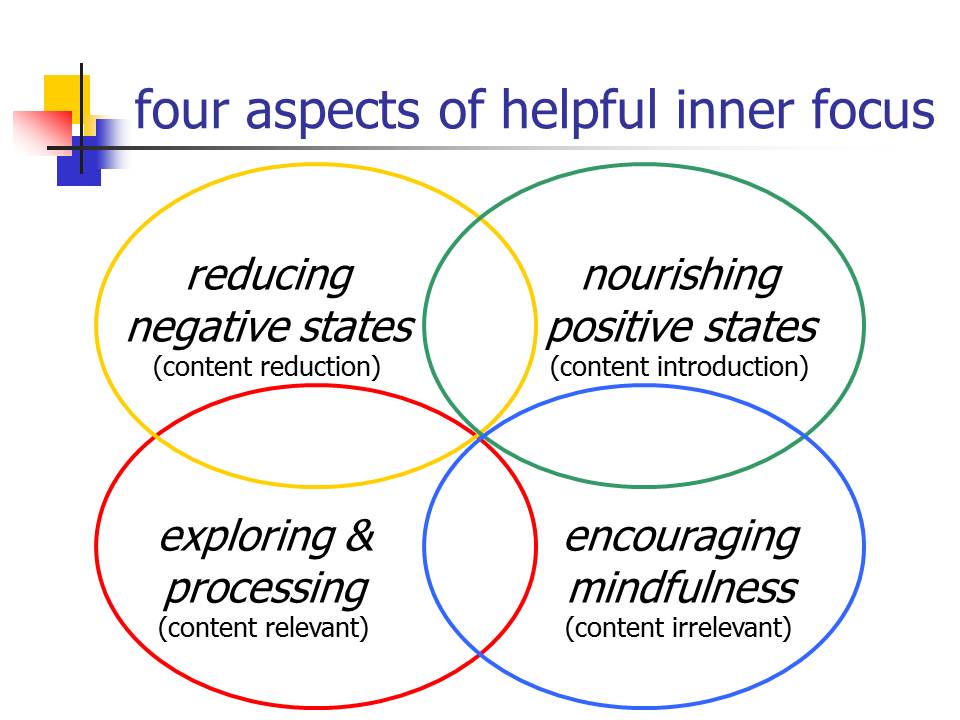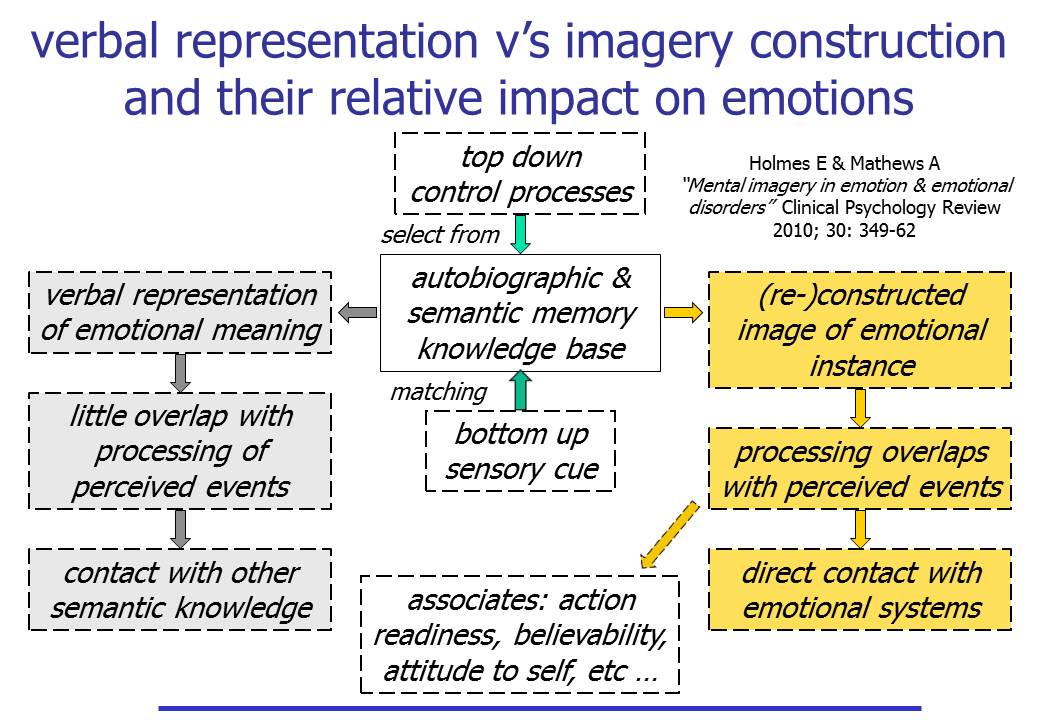Life skills for stress, health & wellbeing, tenth session (part 2 - therapeutic writing)
Last updated on 2nd December 2010
I wrote yesterday about the first part of this tenth "Life skills" evening. I particularly discussed development of Goodwill practice - very much in the "Nourishing positive states" section of the "Four aspects" diagram (below). In the second half of the evening we moved on to the "Exploring & processing" section of the diagram with the introduction particularly of various forms of therapeutic writing.

I'm a big fan of Jamie Pennebaker's work on the value of "expressive writing". See for example the three blog posts I wrote back in January on "Writing (& speaking) for resilience & wellbeing". For many years, "expressive writing" - delving deeply into feelings & thoughts about upsetting experiences - was the only form of "therapeutic writing" that one could validly claim had been shown to be of real use in good research studies. This situation has now changed and continues to evolve excitingly. Different research teams have now explored therapeutic writing that focuses on many different areas. Examples include "best possible selves", "intensely positive experiences", dissonance between behaviour and values, growth after trauma, self-transcendence, attachment, personally respected qualities, and important life domains.
In early therapeutic - typically "expressive" - writing studies, participants were usually asked to write for 20 minutes or so on three or four consecutive days. These instructions have now been widely varied, with writing time being anywhere between 2 and 30 minutes (or more), and intervals between writing sessions varying between a few minutes to over a week. Gains have been surprisingly robust despite these variations!
This evening's course participants were given a series of handouts about therapeutic writing. One entitled simply "Therapeutic writing exercises" gave ideas for five "positive" writing topics. These included looking at the possibility of "Posttraumatic growth", a couple of topics (personal values & important life domains) taken from self-affirmation theory (although other researchers have alternative more self-transcendent explanations for some self-affirmation gains), and a couple (best possible selves & intensely positive experiences) that I described last year in the blog post "Writing for health & wellbeing". There's now a five week gap before the next "Life skills" evening, and I've asked course members to experiment with writing about at least a couple of these five "positive" topics.
I also gave them handouts on Jamie Pennebaker's "expressive writing". These included one written by me, and a series of slide miniatures (slides 1-6 and slides 7-12) giving a more academic view of the "expressive writing" research underpinnings. Pennebaker's website gives further information and writing suggestions. I have asked participants to also try out "expressive writing". Traditionally this has involved writing for 15 to 20 minutes on three or four occasions, expressing one's deepest thoughts and feelings about the worst experiences of one's life. It is rather "diving into the emotional deep end", although research shows this is a surprisingly safe and very frequently a helpful thing to do. More recently I heard Jamie Pennebaker saying (at the BABCP conference last month) that it's now been found that simply writing one's "deepest thoughts and feelings" about "something of personal emotional importance" produces very comparable benefits. So it's fine to choose challenging personal subjects from the past, present or even the future. Writing about "positive" experiences should probably best be less analytical and more visual/sensory (involving the right hand side of the diagram below), while writing about "negative" experiences is probably best a mixture of delving deeply into emotions but also one's thoughts as well (so adding the left side of the diagram). My recent blog on Emily Holmes's work discusses this and it's illustrated below:

Forms of therapeutic writing about both "positive" and "negative", or more accurately "pleasant" and "unpleasant", subjects are often helpful for our health & wellbeing for months after a series of three or four writing episodes. Writing about "unpleasant" subjects may be particularly useful for people who tend to worry or ruminate a good deal. Therapeutic writing is a great tool to have in one's "kitbag" of self-help methods.
